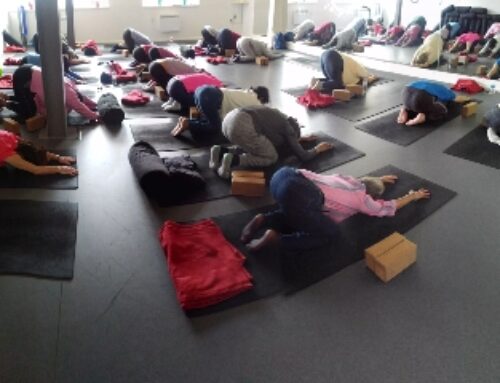Introduction: Imagine carrying an invisible weight that constantly drags you down, yet remains unseen and misunderstood by those around you. This is the daily reality for millions who live with the aftermath of trauma. Surprisingly, research indicates that 70% of adults have experienced at least one traumatic event in their lifetimes. The impacts are far-reaching, affecting our bodies, minds, and relationships in profound ways. Yet, trauma does not have to define us. With the right understanding and tools, it is possible to step out of the shadows of trauma and into healing and resilience.
Step 1: Acknowledge and Accept
The first step in the journey to overcoming trauma is to acknowledge its presence and accept its impact on your life. This step may seem simple, yet it’s crucial and often challenging. The reality of trauma can be hard to face. However, denying or minimizing its effects only allows its power to grow.
It is essential to remember that acknowledging your trauma does not mean that you’re weak or broken. On the contrary, it is a testament to your strength and the first step towards regaining control over your life.
During this stage, you might find it beneficial to write about your experiences. Journaling can be an incredibly therapeutic tool, allowing you to express feelings or thoughts you may find difficult to articulate verbally.
This process is about giving yourself permission to validate your experiences without judgment, which in turn can foster resilience and open the door to healing. Remember, it’s okay to seek professional help at any point. A mental health professional can provide guidance, support, and tools to help you navigate this process more effectively.
I have been reading The Daily Stoic which has helped me a lot.
Step 2: Understanding the Effects on Mind and Body
After acknowledging your trauma, it’s time to understand how it has affected your mind and body. Trauma can leave significant psychological and physiological imprints. These effects may manifest as anxiety, depression, sleep disorders, difficulty focusing, chronic pain, or even changes in your immune system functioning.
In this step, education is key. It’s crucial to understand that your reactions are common responses to trauma and not indications of personal weakness or failure. The human body and brain have evolved to respond to stressful situations, and your responses are a natural part of this survival mechanism.
Consider exploring resources such as books, podcasts, and online articles about the effects of trauma. These can provide valuable insights and help you understand your symptoms. This understanding, in turn, can reduce fear and confusion and create a sense of control.
It can be beneficial to consult with healthcare professionals at this stage. They can help identify trauma-related issues you may be experiencing and provide treatments that can aid in managing symptoms. This can include psychotherapy, medication, physical therapy, and mind-body therapies like yoga and mindfulness meditation.
Remember, it’s okay if this step takes time. Understanding the impact of trauma on your mind and body is a significant part of your healing journey, and it should not be rushed. You are taking back your life one step at a time.
Step 3: Creating a Safe Environment for Healing
Creating a safe and nurturing environment is a crucial step in the healing process. This step goes beyond physical safety; it includes creating a space where you can express your emotions without fear of judgment and where you can begin to rebuild trust in others and in yourself.
Start by identifying the people, places, and situations that make you feel safe and comfortable. You may find solace in quiet, serene places like a park or a library, or you might feel better in the company of close friends or family. Being around supportive, understanding people can provide you with a sense of security and acceptance.
In addition to your external environment, consider your internal emotional state as well. Practicing self-care is an essential part of creating a safe internal environment. This can include maintaining a healthy diet, engaging in regular exercise, ensuring you get enough sleep, and practicing stress management techniques such as mindfulness and meditation.
Also, engaging in activities that you enjoy and that bring you happiness can help create positive emotions and decrease the stress and anxiety often associated with trauma. This could be reading, painting, gardening, playing a musical instrument, or any other hobby or interest that you find fulfilling.
Lastly, remember to set boundaries for yourself. It’s okay to say no to situations or people that make you uncomfortable. Your healing is your priority, and protecting your emotional well-being is a critical part of creating a safe space for your recovery.
Step 4: Seeking Professional Help
The final step in understanding and healing from trauma is to seek professional help. While the steps we’ve discussed can greatly aid your recovery, it’s essential to understand that healing from trauma can be a complex process, and professional guidance can often be beneficial.
This doesn’t necessarily mean you have to see a therapist, although many people find therapy to be a valuable resource. Other professionals can also provide help, such as support group facilitators, spiritual leaders, or life coaches. What’s most important is that you find a person or group that makes you feel understood, validated, and supported.
Professional help can provide you with additional tools and techniques to manage your symptoms and cope with your experiences. For instance, a trained therapist can help you explore different types of therapy, such as cognitive-behavioral therapy (CBT), which can help you change harmful thought patterns, or Eye Movement Desensitization and Reprocessing (EMDR), which has been found to be particularly effective for treating post-traumatic stress disorder.
Furthermore, professionals can provide a safe and structured environment to confront your trauma and aid your healing process. They can help you set realistic expectations for your recovery and work with you to develop a personalized treatment plan.
Remember, there’s no “right” way to heal from trauma. Every person’s experience and recovery process is unique. By following these steps – recognizing and understanding your trauma, acknowledging your feelings, creating a safe environment for healing, and seeking professional help – you’re taking important strides toward recovery. Remember, it’s okay to ask for help, and it’s okay to take your time. Healing is a journey, not a destination, and you have the strength within you to navigate this path.




